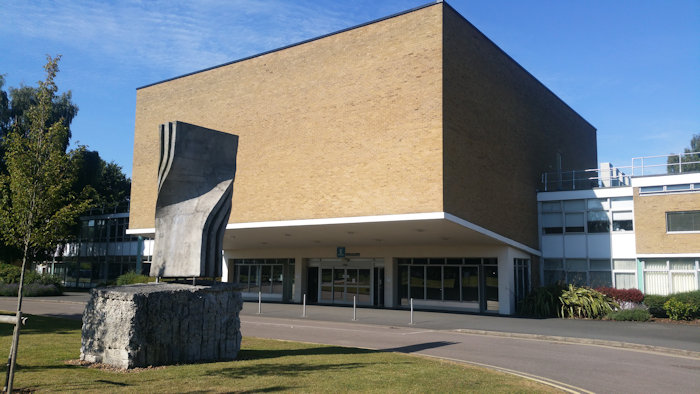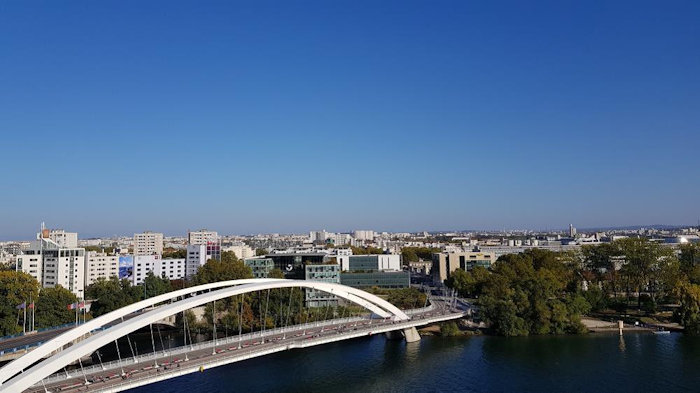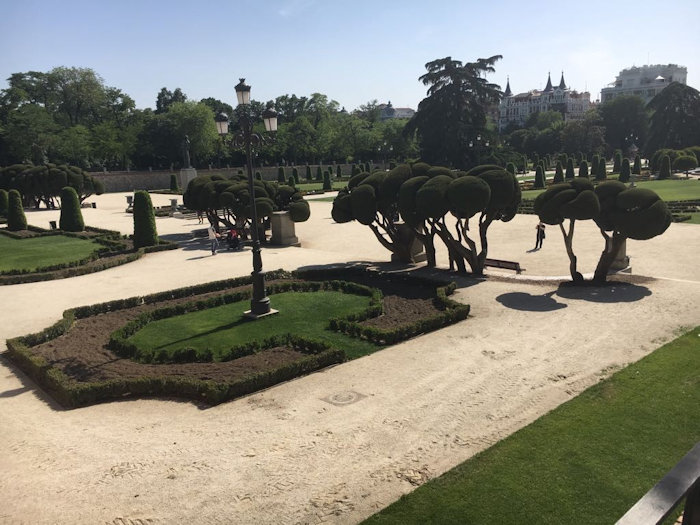Industrial and academic placements – reflections from current CDT students
All of our CDT students have the opportunity to attend placements with industrial or academic partners over the course of their studies. Here we hear from a few of our CDT students who have undertaken a placement.
Inna Gorbatenko
In November 2016, I completed a two week placement with Shell Global Solutions at their technical centre in Hamburg, a world renowned group of energy and petrochemical companies with approximately 90,000 employees in more than 70 countries and territories. During my time there, I was given a responsibility to review and formulate a correlation between the time and un-stretched burning velocities from fuel data previously obtained at the University of Leeds’ fan-stirred bomb. I also looked into the cyclic variability of the combustion investigating the potential causes of the different knock intensities, and whether the combustion characteristic such as an excitation time could be a possible indicator of the soft or hard knock. There is a widespread belief that aromatic fuels like Toluene do not knock as hard as alkanes. Therefore, upon my return from the placement I specifically investigated this fuel in the Rapid Compression Machine experimental facility at the University of Leeds. Unfortunately, the collected ignition delay data showed very poor repeatability compared to other fuels tested, and was herby inconclusive. However, this study is still under investigation and depending on the outcome there is a potential to publish a paper with this research. Another immediate outcome from my placement was the decision to investigate the different formulation of the surrogate gasoline mixture for the comparisons and validation reasons, which emerged from the invaluable scientific discussions with the researchers, professionals and scientists at the Shell Global Solutions.
My placement provided me with the unique opportunity to develop my transferable skills within a workplace environment. I enhanced my personal and social skills, established good working relationships with people at different levels of the organisation, effectively communicated and presented my work to a non-specialist audience, encouraged discussions and answered challenging questions. I was able to improve my problem solving and organisational skills by identifying the issues and suggesting practical solutions, analysing how the theoretical concepts are adapted to suit practical solutions, setting priorities, progressing several tasks concurrently, adapting existing concepts, using initiative and working autonomously. I received tremendous support and guidance from the Shell Global Solutions employees, in particular Dr Sandro Gail and Prof Roger Cracknell. This only enhanced my skills, which are required for success in my PhD, employment and throughout my life. Meeting professionals and having exposure to their business allowed me to find out more about the company and the industry aspects of the research, which will benefit me to make a more informed career decision.

Godwin Madho
I did my placement at Culham Centre for Fusion Energy (CCFE) near Oxford in summer 2017. CCFE is the UK’s national fusion research laboratory and the site is home to the Joint European Torus (JET) and the Mega Ampere Spherical Tokamak (MAST). Research here contributes to a better understanding of fusion, plasma physics, numerical modelling and materials development for extreme environment, to name a few. The research done here was key in the development of International Thermonuclear Experimental Reactor (ITER) currently being built near Marseille which is a collaboration between the European Union, India, Japan, China, Russia, South Korea, and the United States. The machine's aim is to demonstrate the use of fusion as an energy source by producing more thermal power from the fusion process than is used to heat the plasma, this is something that has not yet been achieved in any fusion reactor.
When plasma is produced in these devices it can become unstable and release a lot of energy which can damage the inside wall stopping the machine from being efficient. These events repeat themselves randomly and there is currently no way to accurately predict when these outbursts will occur. Numerical models currently used to study plasma behaviour are computationally very intensive and cannot be used to predict any real time behaviour. Hence a framework is needed which can be used to accurately predict these outbursts and can be used in real time for plasma physics experiments.
While at CCFE I was working with Dr Wayne Arter to find a simpler model which shows similar nonlinear behaviour as observed in experiments and use a data assimilation method called Ensemble Kalman Filter (EnKF) to better predict when these outbursts might occur. Using the simpler model helps to overcome the computational hurdle and using data assimilation helps to overcome the fact that we are not taking into account all behaviour. This combination means we can get accurate data at a faster rate. Working at CCFE I had to go through numerous different models to check which ones suited the data and go through results from different instruments to see which data set should be used. Given the complexity of the task the EnKF code had to be rewritten to make it flexible so it can change the model being used very easily. The vast data set available also caused huge problems as I had to meticulously go through each instrument trying to see which one was the best and available for a given experiment. Sadly, due to time constraints a "right" model and matching instrument was not found. The hope is to revisit the problem towards the end of my PhD to see if more progress can be made.
The experience of working at CCFE has given me a great insight in how work is done in an international organisation and has definitely helped me learn how to plan and tackle large problems. It has also helped me to see what sort or research work is available for someone like me after my PhD.

Jenny Wong
In October 2017, I travelled to France to visit Thierry Alboussière, Renaud Deguen and Stéphane Labrosse at the Laboratory of Earth Sciences (LGL-TPE) in Lyon. LGL-TPE is a merger between Université Claude Benard Lyon and École Normale Supérieure de Lyon, comprising a multidisplinary research effort of 140 people in areas of geophysics, geochemistry and environment in order to understand the formation of the Earth and its evolution.
My PhD project tries to explain the anomalous "F-layer" located at the base of the Earth's outer core, which may affect how we view the geodynamo is powered. It was exciting to discuss my work with other researchers who were also interested in this problem, since my literature search revealed that many different approaches have been used in the past and I was keen to see if my approach using slurry theory was reasonable. A slurry is fluid mixture where fine solid particles are suspended in the liquid, and its fluid dynamical behaviour is fundamentally different to that of a single phase liquid mixture.
I was able to communicate my work to others in a friendly environment, and in exchange for their scrutiny I developed a deeper understanding of my research and my hosts suggested further work that I would like to pursue. For example, I have now submitted a paper for publication and I am currently working on how a slurry could initially grow or shrink in the Earth's core over its lifetime, which will be included in my thesis. I presented my work at a seminar to other PhD students at the LGL-TPE, where I was able to connect and network with students who I look forward to seeing again at a future conference!

Caitlin Chalk
My academic placement consisted of three weeks at the Universidad Politecnica de Madrid in January 2016. The purpose of the trip was to meet with Professor Manuel Pastor and his colleagues, who have done considerable work on modelling landslides, which is my area of study. The time on my placement was spent learning how to use Professor Pastor's modelling software and using it to model some small-scale experimental flows that were performed at the University of Leeds. It was really beneficial, and saved me a lot of time, to learn how to use this software while surrounded by people who were already experts in using it. The placement was also a great opportunity to make contacts and meet other PhD researchers who are working in my field and who I will likely meet again at future workshops and conferences. Aside from the work I did, I enjoyed having the experience of spending three weeks living in Madrid and managed to fill my evenings and weekends with lots of activities and sight-seeing. A definite highlight was a visit to Retiro Park.

Evaldas Greiciunas
I took a slightly different route to most of the placements undertaken in the CDT. Prior the start of the project, I did a two day placement at BAE’s site in Warton, where I was given an overview to the company and scope of the project I would be doing. This gave me a basic overall knowledge of the company and several initial ideas. Instead of returning to do a long-term placement later in the project, I chose to do several daily visits every couple of months visiting HS Marston, BAE Warton and BAE Samlesbury, whilst the rest of time I kept in touch with them electronically. This type of placement was beneficial for me as it allowed me to save time in my project and receive continous guidance from the experts in industry. I was also able to obtain high-level, industrial quality experimental data which I have used to validate my computational fluid dynamics (CFD) predictions. Furthermore, my industry partners gave me access to cutting-edge additive layer manufacturing technologies. This allowed me to realise a novel heat exchanger design concept which has formed the centre piece of my PhD thesis. Finally, I really enjoyed the regular contact with my placement hosts as it allowed me to be constantly on track with the timeline of the project.
